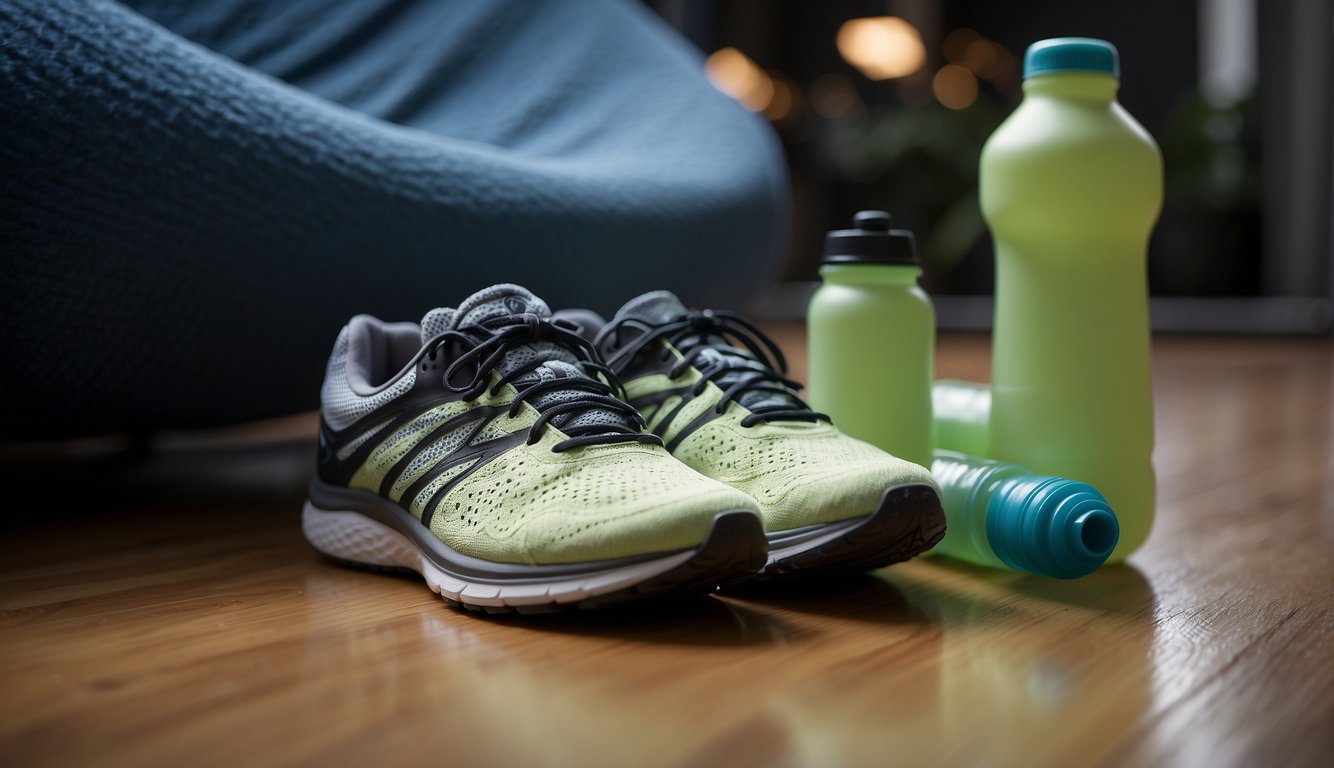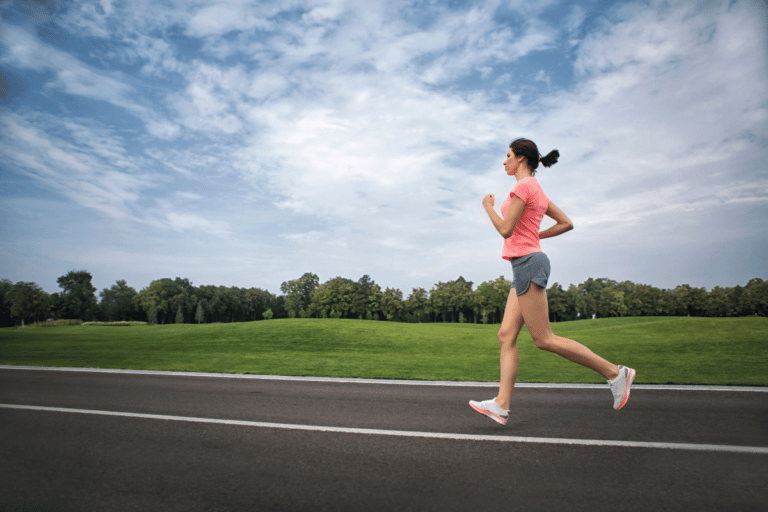Benefits of Post-Run Compression Gear: Enhancing Recovery and Performance
As a UESCA certified running coach, I find that incorporating compression gear into post-run routines significantly enhances recovery. Running can lead to muscle fatigue and soreness due to microtrauma from repetitive impact. Compression gear, which applies moderate pressure to the muscles, can help alleviate these symptoms by increasing blood flow and reducing muscle oscillation.
The consistent pressure aids in decreasing post-run leg soreness and muscle fatigue. It’s not just about feeling better faster; the gear also supports the body’s natural healing processes. By improving blood circulation, compression gear helps in flushing out lactic acid and reduces inflammation, hastening recovery.
For runners looking to get back on the trails or roads sooner with less discomfort, investing in quality compression clothing, such as socks or pants, can be a game-changer. My experience with runners has shown that those who use compression apparel often report a more comfortable recovery phase, which allows them to maintain their training intensity and frequency.
Science Behind Compression Gear
Compression gear aims to enhance circulation and stabilize muscle vibration, optimizing recovery and performance.
What is Graduated Compression?
Graduated compression is designed to optimize blood flow, with the tightest compression at the furthest point from the heart—typically the ankles.
This encourages the flow of oxygen-rich blood back towards the heart, facilitating quicker removal of metabolic waste from the muscles. The science is clear on its role in efficient recovery; by aiding in venous return, compression gear supports the circulatory system and can help to decrease inflammation and muscle soreness after strenuous workouts.
The Role of Arterial Walls and One-Way Valves
The arterial walls in our veins are tasked with maintaining circulation and backflow prevention. One-way valves work together with the muscle pump to ensure that the deoxygenated blood makes its way back to the heart.
Graduated compression assists these valves, providing an external support structure that helps to counteract the effects of gravity on blood flow. This action is particularly vital post-run when the circulation system could benefit from the added assistance as it works to deliver fresh, oxygen-rich blood to fatigued muscles.
Muscle Vibration and Its Effects
When I run, my muscles experience vibrations that can lead to muscle fatigue and micro-damage over time. Compression gear can stabilize these muscle oscillations, potentially reducing their harmful effects and associated risks.
By containing muscle vibrations, compression garments may also enhance proprioception, or the awareness of body positioning, which can be particularly useful for maintaining good form as fatigue sets in post-run.
Compression Gear Types
When selecting compression gear, it’s crucial for runners to understand the different options available. Each type serves a specific purpose, and knowing which suits your needs can greatly enhance your post-run recovery.
Compression Socks and Sleeves
Compression socks are designed to apply pressure to the lower legs, aiding in circulation and reducing the likelihood of muscle soreness post-exercise. The materials commonly used include nylon and spandex, which provide elasticity and a snug fit. They come in various lengths, with knee-high models offering full coverage for the calves.
- Compression Socks:
- Typically made from a blend of nylon and spandex
- Available as low-cut or knee-high
- Aim to stabilize muscles and reduce blood pooling in the lower legs
Compression sleeves are similar but don’t cover the foot, focusing solely on the calf and sometimes thigh muscles. They offer targeted compression, allowing for more freedom and breathability while still supporting the muscles.
- Compression Sleeves:
- Focuses on the calf and thigh without covering the foot
- Provides targeted compression to support specific muscle groups
Compression Tights and Clothing
Compression tights are constructed using the same materials as socks and sleeves but are designed to cover the entire leg. Often chosen by runners for their ability to offer overall leg muscle support, they are a popular piece of clothing for those looking to enhance recovery.
- Compression Tights:
- Seamless design with varying degrees of compression
- Commonly used to support the whole leg, from the thigh down
Additionally, compression clothing extends to shirts and shorts that apply compression to the upper body and the gluteal and upper leg muscles, respectively. Brands like 2XU are well-known for their quality compression clothing, offering both support and comfort.
- Compression Clothing:
- Includes shirts and shorts made with a nylon and spandex blend
- Items like 2XU compression garments cater to both upper and lower body
Understanding the types of compression gear available can be a game-changer for any runner’s recovery strategy. By utilizing options that provide targeted or general muscle compression, you can enhance your recovery and prepare for your next run with confidence.
Benefits to Runners
As a UESCA certified running coach, I find that the application of post-run compression gear offers substantial benefits in two main areas: enhancing running performance and providing injury prevention and safety. Let me share some insights into how this gear can be pivotal in any runner’s regimen.
Enhancing Running Performance
Compression gear plays a crucial role in improving running performance by aiding in recovery time and reducing muscle soreness. After a run, wearing compression clothing can:
- Increase blood circulation, which facilitates oxygen delivery to the muscles, helping them recover faster.
- Reduce muscle oscillation during and after activity, potentially decreasing energy waste and promoting endurance.
Regular use of compression attire can lead to faster recovery times, allowing runners to maintain a more consistent training routine without being sidelined by excessive soreness or fatigue.
Injury Prevention and Safety
Equally important is the gear’s contribution to injury prevention. Proper compression can:
- Provide support to muscles and joints, minimizing the risk of common running injuries.
- Enhance proprioception, or the awareness of body position, which is critical for maintaining proper running form and, consequently, safety.
By incorporating the right running gear, including shoes and compression wear, into their regimen, runners can reduce the risk of injury and improve their overall safety during and after their runs. For those especially prone to injuries or looking to enhance their safety, this aspect should not be overlooked.
Moreover, the consistent use of compression gear has been associated with a lower risk of conditions such as blood clots, especially on longer runs, making it a worthwhile investment for serious endurance athletes.
Post-Run Recovery Advantages

After a challenging run, it’s vital to focus on recovery to minimize muscle soreness and expedite the healing process. I’ve found that utilizing compression gear can significantly benefit this phase.
Reducing Muscle Soreness and Swelling
Compression gear applies stable pressure to the muscles, which has been proven to reduce muscle soreness and swelling.
The consistent pressure helps in reducing the space available for swelling and can diminish the muscle oscillation that occurs during running. This is not only critical to comfort but also helps in maintaining physical health benefits by safeguarding the extremities and major muscles from excessive strain.
- Minimize muscle vibrations: Less vibration during recovery leads to reduced soreness.
- Decreased swelling: Stable pressure limits the buildup of fluids in the muscles.
Speeding Up Recovery Time
One of the key recovery benefits of post-run compression gear is its ability to speed up recovery time.
The enhanced circulation from the compression supports quicker removal of metabolic wastes produced during exercise, while also increasing the flow of nutrients to the muscles. This improved blood flow contributes to a more efficient recovery process, allowing you to return to running sooner and with less discomfort.
- Enhanced circulation: Improved blood flow assists in faster metabolic waste removal.
- Increased nutrient delivery: Aids the muscle repair process by providing essential nutrients.
Considerations for Optimal Use
In incorporating post-run compression gear into a training regimen, selecting an appropriate compression level and ensuring a proper fit are crucial for maximizing the benefits.
Choosing the Right Compression Level
Compression gear is quantified in millimeters of mercury (mmHg), indicating the amount of pressure it exerts on the muscles. It’s important to select gear that provides sufficient compression to stimulate blood flow without being excessively tight, which could hinder circulation and negate the positive effects.
For the majority of runners, including fitness enthusiasts and triathletes, compression levels ranging from 15-20 mmHg are generally effective. Anything higher is typically reserved for medical purposes and should be used in consultation with a healthcare professional.
Balancing Fit and Comfort
A well-fitted piece of compression gear should feel snug but not constricting, allowing for full range of motion without slipping. Quality compression gear often blends synthetic materials with cotton for durability and moisture-wicking, while avoiding the risk of chafing.
To avoid the placebo effect of ill-fitting compression wear, I always recommend trying on multiple sizes or consulting with a product specialist. Comfortable compression maximizes the intended physiological benefits, making recovery as efficient as possible for runners of all levels.






